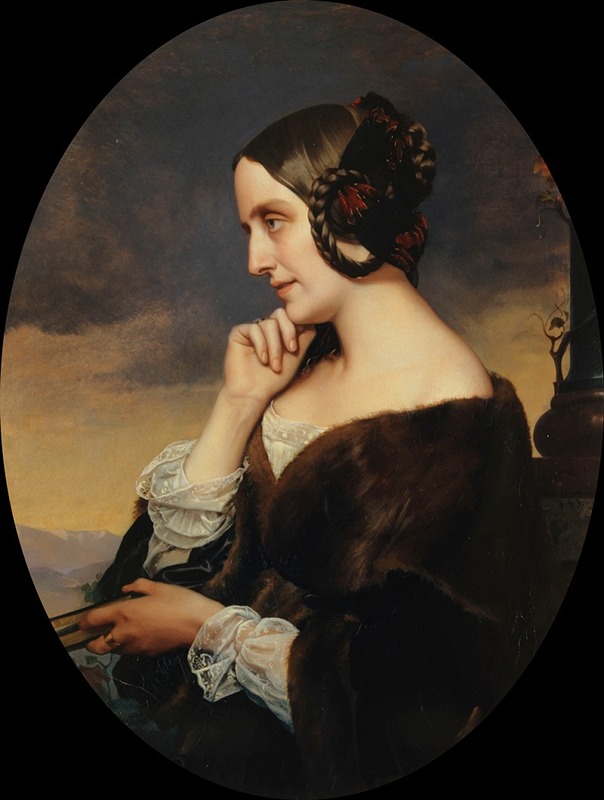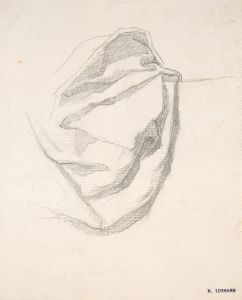
Portrait de Marie de Flavigny, comtesse d’Agoult
A hand-painted replica of Henri Lehmann’s masterpiece Portrait de Marie de Flavigny, comtesse d’Agoult, meticulously crafted by professional artists to capture the true essence of the original. Each piece is created with museum-quality canvas and rare mineral pigments, carefully painted by experienced artists with delicate brushstrokes and rich, layered colors to perfectly recreate the texture of the original artwork. Unlike machine-printed reproductions, this hand-painted version brings the painting to life, infused with the artist’s emotions and skill in every stroke. Whether for personal collection or home decoration, it instantly elevates the artistic atmosphere of any space.
Henri Lehmann's Portrait de Marie de Flavigny, comtesse d’Agoult is a 19th-century oil painting that depicts Marie Catherine Sophie de Flavigny, better known as the Comtesse d’Agoult. The painting is a notable example of Lehmann's portraiture, which was characterized by its refined technique and attention to detail. Henri Lehmann (1814–1882) was a German-born French painter who studied under Jean-Auguste-Dominique Ingres, one of the leading figures of Neoclassicism. Lehmann's works often reflect the influence of his mentor, particularly in their precision and elegance.
Marie de Flavigny, the subject of the portrait, was a French writer and intellectual who published under the pen name Daniel Stern. She is perhaps best known for her romantic relationship with the composer Franz Liszt, with whom she had three children. Beyond her personal life, she was an accomplished author and a prominent figure in the intellectual and cultural circles of her time. Her works include historical studies, essays, and memoirs, which provide valuable insights into the political and social climate of 19th-century Europe.
The portrait captures the Comtesse d’Agoult in a poised and dignified manner, reflecting her status as a member of the French aristocracy and her intellectual prominence. Lehmann's use of light and shadow, as well as his meticulous rendering of textures, such as the fabric of her clothing, contributes to the lifelike quality of the painting. The composition emphasizes her calm demeanor and thoughtful expression, aligning with her reputation as a woman of intellect and depth.
The exact date of the painting is not definitively documented, but it is believed to have been created during the mid-19th century, a period when Lehmann was active in Paris and gained recognition for his portraits of notable figures. The painting is an example of the academic style that dominated French art during this era, blending elements of Neoclassicism with a growing interest in realism.
The current location of the painting is not widely documented in public sources, and it is unclear whether it is held in a private collection, a museum, or another institution. Despite this, the portrait remains an important representation of both Henri Lehmann's artistic skill and the cultural significance of Marie de Flavigny, Comtesse d’Agoult, as a historical figure.
This work is a testament to the intersection of art, literature, and history, capturing the essence of a remarkable woman through the lens of a talented portraitist.


















